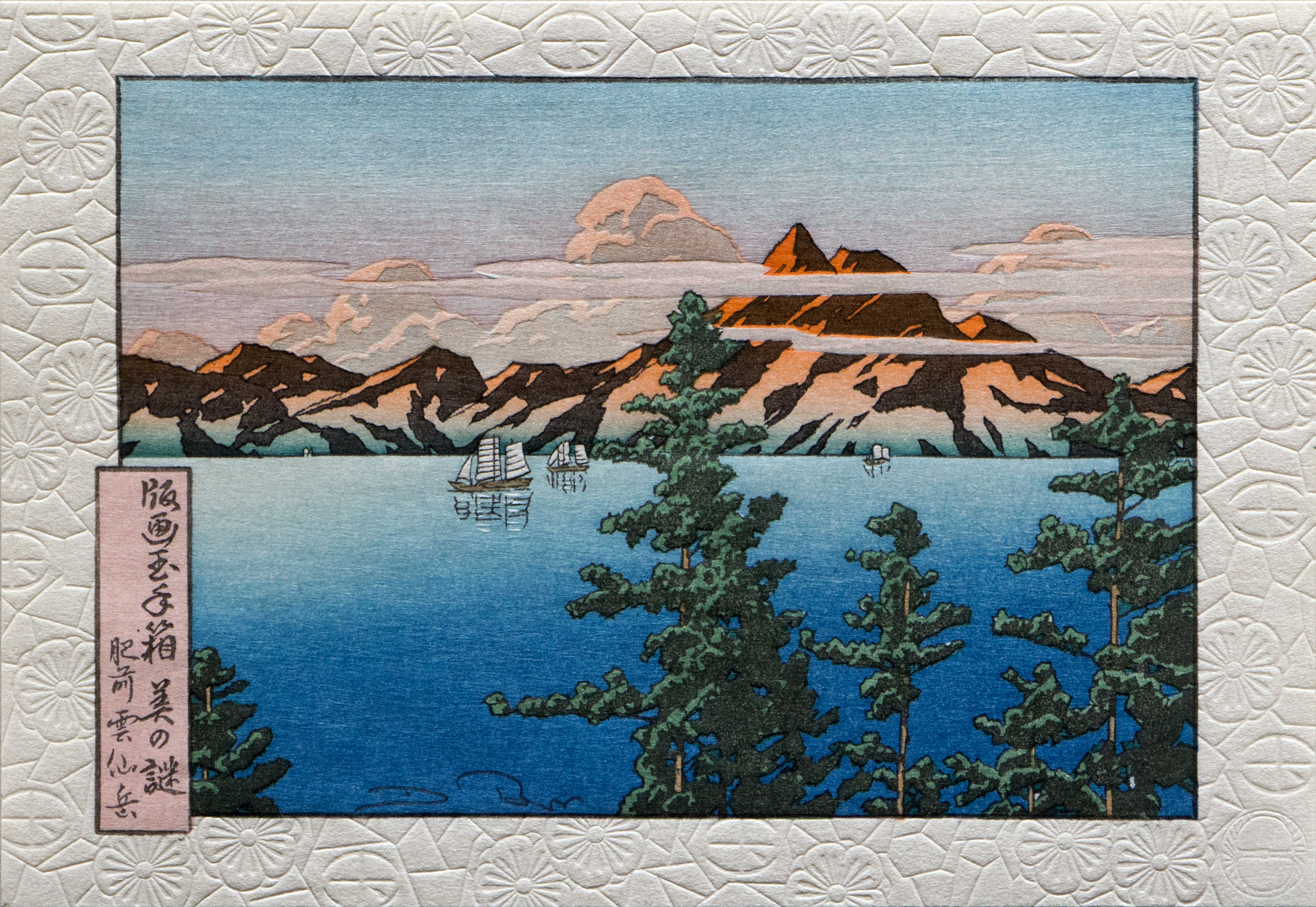Data
Description
After the restrained elegance of the previous two images in this series, it's time to have something a bit more 'filling'. This print was designed in about 1927 by the well-known artist Kawase Hasui, and is an example of the genre of prints known as Shin-Hanga. This translates as 'New Prints' and that designation reflects the desire of the man who kick-started the genre - publisher Shoichiro Watanabe - to have them seen in the same light as the old ukiyo-e prints, exploring similar themes (landscape, beautiful women, and actors) and also being made by craftsmen working cooperatively (publisher, designer, carver, printer ...)
You may think that it is a bit too soon to be studying another mountain/seascape, but there are any number of differences to explore between this and the Hiroshige design we saw earlier, the most fundamental of which is of course the level of realism. Hiroshige 'suggests' things - a dab of ink will become a person or a boat - while Hasui draws them. He was there in Kyushu the day when he sketched this scene. Visiting the same locations today, his sketches can nearly always be matched to the actual locations. Hiroshige's almost never can.
As for the printmaking process, after the basic design of an ukiyo-e print was ready, it was turned over to the craftsmen to complete. The carvers and printers needed no further direction from the designer. But the Shin Hanga artists were involved much more deeply in the process. For any given set of blocks, the expressive possibilities are (literally) infinite, as anybody who has watched a sunset change second by second can testify, and we know from reading old diaries that Hasui would spend days sitting at the side of the printer's workbench, working out a suitable balance of colours and tones to capture what he had in mind for an image. It was intensely collaborative work, and it is a matter of great regret to me that these days, most viewers of Japanese woodblock prints know nothing of the part played in their creation by the (mostly) un-named craftsmen.
But you and I know!
David
Other prints in this set
-
 Mystique of the Japanese Print
Mystique of the Japanese Print
-
 Mt. Fuji from Lake Kawaguchi
Mt. Fuji from Lake Kawaguchi
-
 Kabuki Actor
Kabuki Actor
-
 Hydrangea in Rain
Hydrangea in Rain
-
 Young Girl
Young Girl
-
 Mt. Unzen
Mt. Unzen
-
 Needlework
Needlework
-
 Late Autumn
Late Autumn
-
 Japanese Lute
Japanese Lute
-
 Moon of Enlightenment
Moon of Enlightenment
-
 Winter Ferry
Winter Ferry
-
 Urashima Taro
Urashima Taro
-
 Still Life with Fugu
Still Life with Fugu
-
 Itinerant Dancer
Itinerant Dancer
-
 Meiji Patterns
Meiji Patterns
-
 Ukiyo-e Beauty
Ukiyo-e Beauty
-
 Chinese Woodblock Print
Chinese Woodblock Print
-
 Parrot and Acorns
Parrot and Acorns
-
 Mt. Fuji in a Window
Mt. Fuji in a Window


